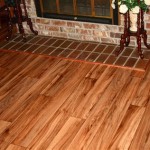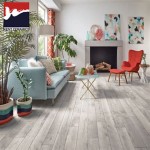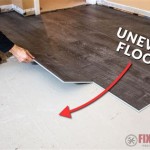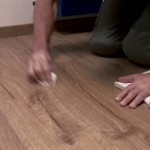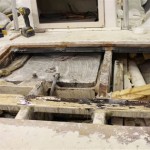Stage Flooring Materials: A Comprehensive Guide
Stage flooring plays a crucial role in the success of any performance, from theatrical productions and dance recitals to concerts and public speaking events. The right flooring not only provides a safe and functional surface for performers but also contributes to the overall aesthetic and acoustic quality of the performance space. Selecting the appropriate stage flooring material requires careful consideration of various factors, including the type of performance, budget constraints, durability requirements, and desired aesthetic.
This article aims to provide a comprehensive overview of the various types of stage flooring materials available, highlighting their key characteristics, advantages, and disadvantages. It will delve into the considerations necessary for choosing the optimal flooring for a specific performance environment.
Key Considerations for Stage Flooring Selection
Numerous factors influence the selection of stage flooring. Prioritizing these considerations will streamline the decision-making process and ensure the chosen material aligns with the performance needs and budgetary limitations.
Type of Performance: The primary determinant is the type of activity the stage will host. Dance performances necessitate a sprung floor that absorbs impact and reduces the risk of injury. Theatrical productions often require a versatile surface suitable for scenery changes and diverse acting styles. Concerts need flooring that can withstand heavy equipment and high levels of vibration. If the stage is to be used for multiple purposes, a compromise may be necessary, potentially involving modular or adaptable flooring systems.
Durability and Maintenance: Stage flooring experiences significant wear and tear. The material chosen should withstand heavy foot traffic, equipment movement, and potential impacts. Durability directly correlates with the lifespan of the floor and the frequency of replacements or repairs. Easy maintenance is also critical. Materials requiring specialized cleaning or treatments can add substantial costs and logistical challenges. The selected material should be resistant to staining, scratching, and other forms of damage, and should be easily cleaned with standard methods.
Acoustic Properties: The acoustic properties of stage flooring can significantly impact the sound quality within the performance space. Hard, reflective surfaces can contribute to unwanted echoes and reverberation, while softer, more absorbent materials can dampen sound and improve clarity. The ideal flooring will strike a balance between sound reflection and absorption, depending on the specific acoustic requirements of the performance. For example, spaces used primarily for musical performances may benefit from flooring that provides some level of sound reflection, while spaces used for spoken word performances may require flooring that absorbs sound to minimize distractions.
Common Stage Flooring Materials: Properties and Applications
A wide variety of materials can be used for stage flooring, each with unique properties and suitability for different applications. Understanding these materials is crucial for making an informed decision.
Hardwood: Hardwood flooring is a classic choice for stages, offering a timeless aesthetic and excellent durability. Maple, oak, and birch are commonly used hardwoods, known for their strength and resistance to wear. Hardwood floors provide a firm, stable surface for performers and offer good acoustic properties. However, hardwood can be expensive and requires regular maintenance, including sanding and refinishing, to maintain its appearance and performance. It is also less forgiving than other flooring options, potentially increasing the risk of injury, especially for dancers. Hardwood is often installed over a sprung subfloor to mitigate this issue.
Sprung Floors: Sprung floors are specifically designed to absorb impact and reduce the risk of injury for dancers and other performers. These floors consist of a resilient substructure, typically made of foam, rubber, or springs, covered with a durable surface material. Sprung floors provide excellent shock absorption and energy return, reducing the strain on joints and muscles. The surface material can be hardwood, vinyl, or another suitable material. Sprung floors are more expensive than traditional flooring options but are a worthwhile investment for performance spaces that prioritize performer safety and well-being. The type of sprung system should be chosen based on the specific activity. Some systems offer higher levels of shock absorption than others.
Vinyl: Vinyl flooring is a versatile and cost-effective option for stages. It is durable, easy to clean, and available in a wide range of colors and patterns. Vinyl flooring can be installed directly over a concrete subfloor or over a sprung subfloor for added comfort and shock absorption. It is a popular choice for dance studios, theaters, and other performance spaces where a durable and easy-to-maintain surface is required. However, vinyl is not as aesthetically pleasing as hardwood and can be more susceptible to damage from heavy equipment or sharp objects. It is important to choose a high-quality vinyl flooring designed for commercial use to ensure its durability and longevity.
Marley: Marley flooring is a type of vinyl specifically designed for dance. It is a thin, non-slip surface that provides excellent traction and allows dancers to execute a wide range of movements safely. Marley flooring is typically rolled out over a sprung subfloor and secured with tape or adhesive. It is easy to install and maintain but can be susceptible to tearing or puncturing. Marley flooring is available in different thicknesses and textures, depending on the specific requirements of the dance style. It is commonly used in ballet studios, modern dance studios, and theater stages.
Rubber: Rubber flooring is a durable and resilient option that is often used in stages that require high levels of impact resistance. It is available in various forms, including interlocking tiles, rolled sheets, and poured-in-place surfaces. Rubber flooring provides excellent shock absorption and sound insulation, making it suitable for spaces used for concerts, gymnastics, or other high-impact activities. It is also slip-resistant and easy to clean. However, rubber flooring can be more expensive than other options and may not be as aesthetically pleasing as hardwood or vinyl. The odor of rubber can also be a concern for some users, particularly in enclosed spaces.
Carpet: Carpet is generally not recommended for stage flooring due to its tendency to absorb sound and its lack of durability under heavy use. However, carpet may be suitable for certain types of performances, such as dramatic plays or spoken word events, where sound absorption is desired. If carpet is used, it should be a low-pile, commercial-grade carpet that is resistant to staining and wear. The carpet should also be securely attached to the subfloor to prevent tripping hazards. Regular cleaning and maintenance are essential to keep the carpet looking its best and prevent the buildup of dust and allergens.
Installation and Maintenance Considerations
Proper installation and maintenance are essential for ensuring the longevity and performance of stage flooring. Incorrect installation can lead to premature wear and tear, uneven surfaces, and safety hazards. Regular maintenance can help prevent damage, extend the lifespan of the flooring, and maintain its aesthetic appeal.
Installation: The installation process will vary depending on the type of flooring material chosen. Hardwood flooring typically requires professional installation to ensure proper nailing, sanding, and finishing. Sprung floors also require specialized installation to ensure proper alignment and support. Vinyl and Marley flooring can be installed by experienced DIYers, but professional installation is recommended for larger or more complex installations. Rubber flooring can be installed in various ways, depending on the type of material. Interlocking tiles are relatively easy to install, while rolled sheets and poured-in-place surfaces require specialized equipment and expertise.
Maintenance: Regular maintenance is essential for keeping stage flooring in good condition. Hardwood flooring requires regular sweeping and mopping to remove dust and dirt. Sanding and refinishing may be necessary every few years to restore the surface and remove scratches or blemishes. Vinyl and Marley flooring can be cleaned with a damp mop and mild detergent. Avoid using harsh chemicals or abrasive cleaners that can damage the surface. Rubber flooring can be cleaned with a broom or vacuum cleaner. Avoid using oil-based cleaners, which can make the surface slippery. Carpet flooring requires regular vacuuming to remove dust and dirt. Professional carpet cleaning may be necessary to remove stains or odors.
Subfloor Preparation: The subfloor is the foundation upon which the stage flooring is installed. Proper subfloor preparation is essential for ensuring a level, stable, and durable surface. The subfloor should be clean, dry, and free of debris. Any cracks or imperfections should be repaired before installing the flooring. The subfloor should also be properly leveled to prevent uneven surfaces or tripping hazards. For sprung floors, the subfloor must be strong enough to support the weight of the sprung system and the performers. In some cases, it may be necessary to reinforce the subfloor with additional supports.
Environmental Factors: Environmental factors, such as humidity and temperature, can also affect the performance of stage flooring. Hardwood flooring can expand and contract with changes in humidity, which can lead to warping or cracking. Vinyl and Marley flooring can become brittle in cold temperatures and may be susceptible to damage from direct sunlight. Rubber flooring can emit odors, particularly in warm temperatures. Choosing flooring materials that are appropriate for the specific environmental conditions of the performance space is important. Maintaining consistent humidity levels and temperature can help prevent damage and prolong the lifespan of the flooring.

Stage Flooring Maple Pine Or Masonite Action Floors

Theatrical No Glare Marley Vinyl Flooring Full Bolt

Stage Flooring Centaur S

Stage Floors That Work Astc

Theatrical No Glare Marley Vinyl Flooring Full Bolt

Stage Parquet Flooring At Best In New Delhi By Edgewise Engineers Id 13930371855

Portable Plywood Big Concert Stage Flooring For Event China Floor And Made In Com

Stage Flooring Maple Pine Or Masonite Action Floors

Buy Standard Quality China Whole Stage Flooring Material Floor Finish Materials Pvc Woven Ground Covering Direct From Factory At Taizhou Jiue Mesh Screen Co Ltd Globalsources Com

Auditorium Contractor Theatre Seating Stage Flooring

